The Navy’s Elite TOPGUN Flight School Started in a Parking Lot Trailer
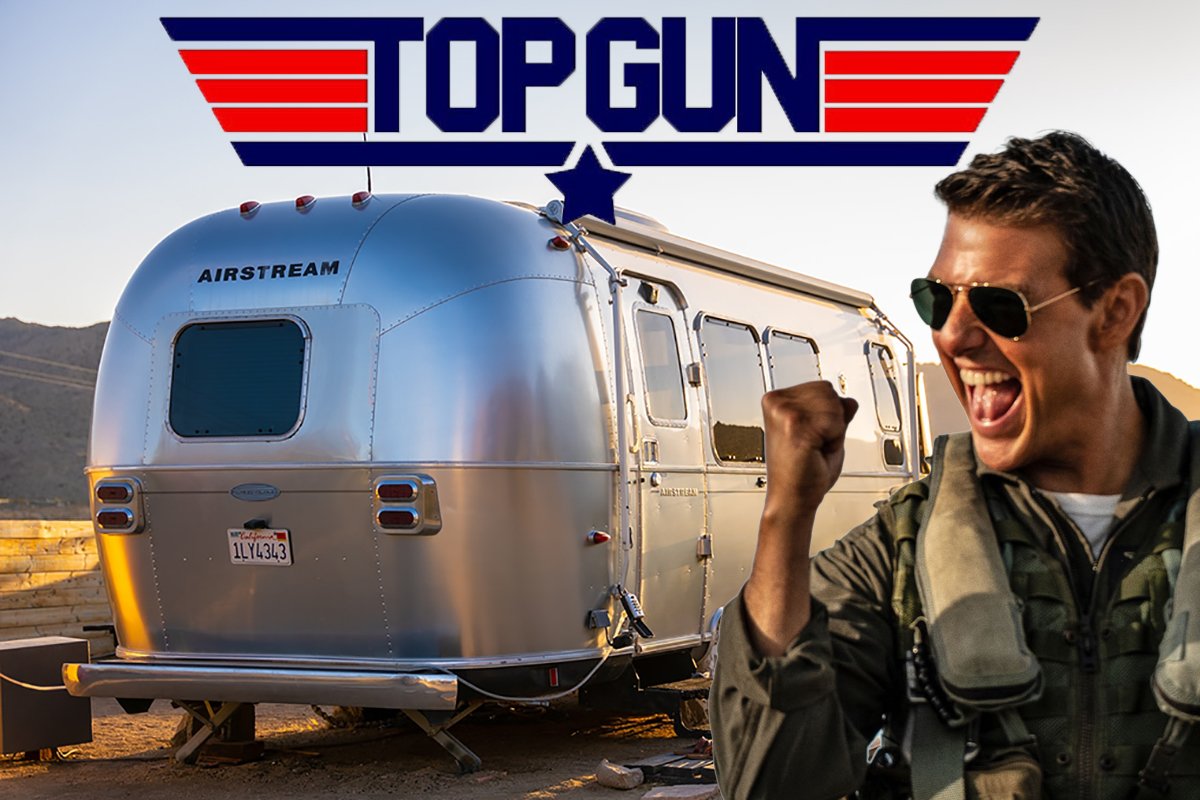
TOPGUN certainly had modest beginnings, but it transformed into a school responsible for producing the best naval aviators in the world. Composite by Coffee or Die Magazine.
The best fighter pilot training course in the world, made famous by the 1986 movie Top Gun, was started inside a trailer docked in a California parking lot.
No, seriously.
Although officially named the US Navy’s Strike Fighter Tactics Instructor Course, the glamorous TOPGUN schoolhouse was created to increase the survivability of fighter aircraft during the Vietnam War.
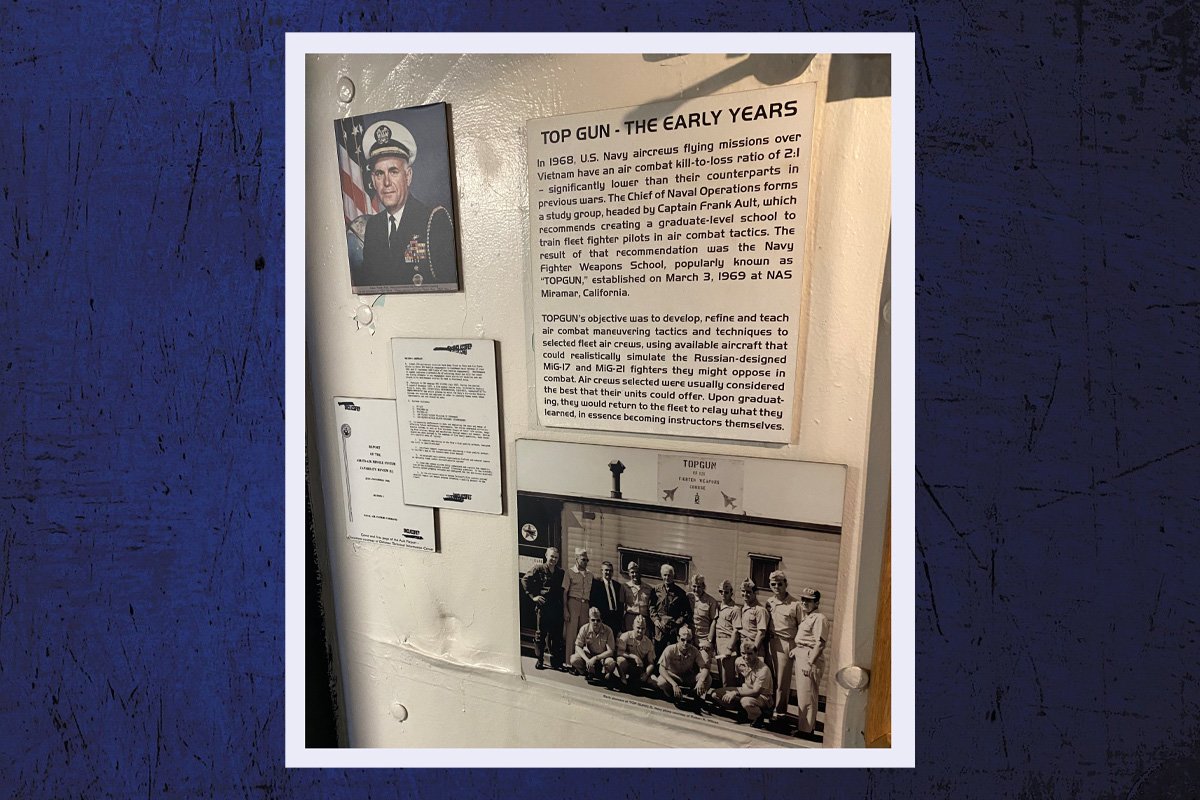
“During the Vietnam War, Navy fighter pilots and aircrew were dying at an alarming rate,” Navy Cmdr. Dustin Peverill, a 20-year Navy veteran and TOPGUN instructor, told the Department of Defense. “The Navy was losing a lot of airplanes and, more importantly, a lot of aircrew.”
In 1968, US Navy aircrews flying missions over Vietnam had an air combat kill-to-loss ratio of 2:1. Capt. Frank Ault led an investigation into why the Navy was suffering such high casualties. In his report he recommended creating a graduate-level flight program to train fleet fighter pilots in advanced air combat tactics.
In response, the US Navy developed the Navy Fighter Weapons School at Naval Air Station Miramar in California a year later.
“The four-week course started with a team of instructors covering US and Soviet aircraft types, weapons systems, and fighter training tactics in a 50-foot-long metal trailer at NAS Miramar,” according to an exhibit inside the USS Midway Museum in San Diego, California.
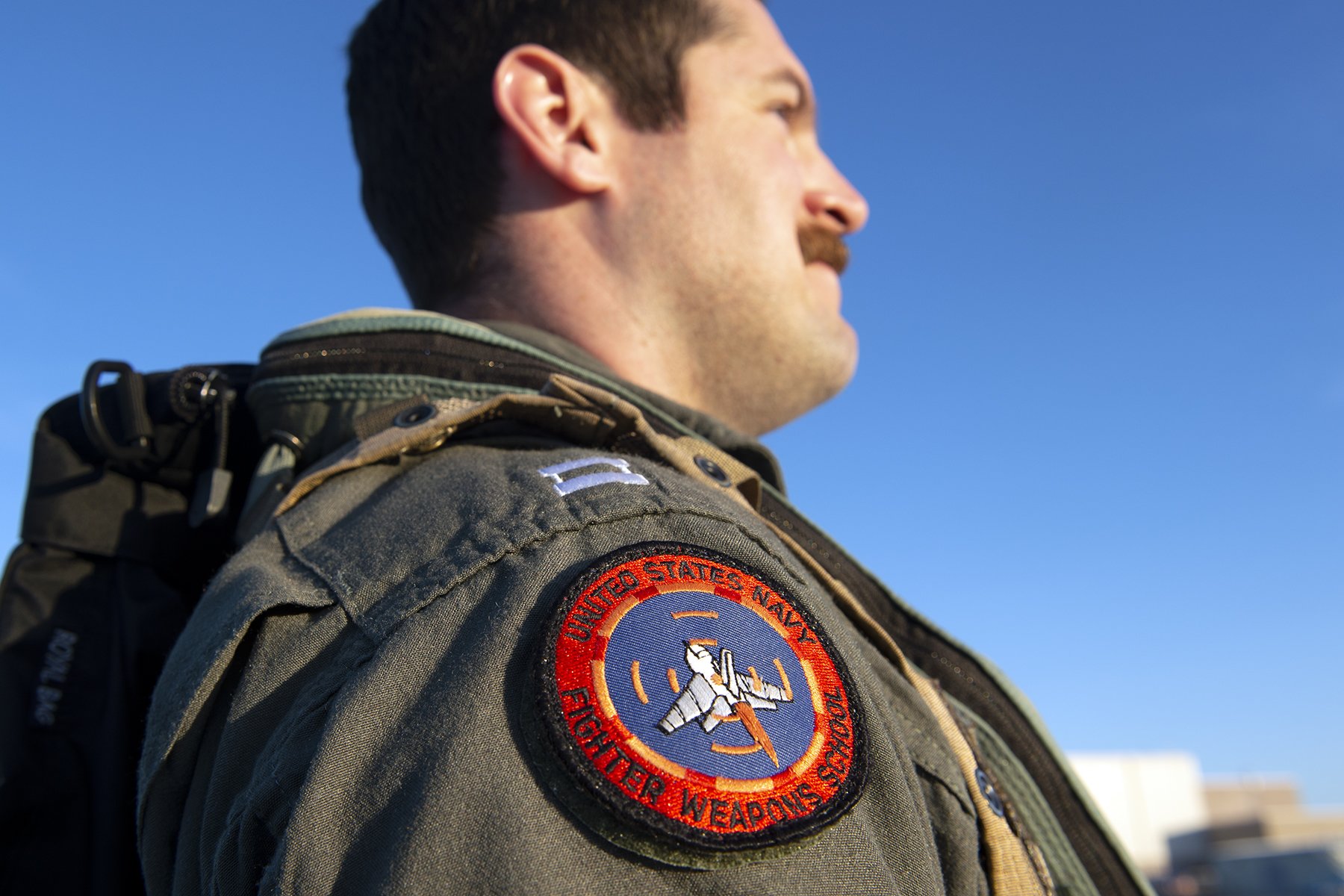
Capt. Dan Pedersen, often considered the “Godfather of TOPGUN,” served as the program’s first instructor. He recruited eight other pilots to set the standard for future generations of naval aviators.
“MiGs [Soviet planes] had a better turn rate, so it could get around you and shoot you down,” Pedersen told Time magazine in 2019. “Phantoms had great power, so we could out-fly the MiGs in terms of speed. So we decided to go straight up, go above them and fly down to a perfect position behind the MiG, and go for a tail shot. Then with tactics like that, we were getting 24 of the enemies for every one of us.”
Pedersen said the movie Top Gun was about 55% positive. He praised the film’s cinematography, saying it was some of the best footage of tactical airplanes ever captured, but he was concerned about how the film might impact the general public’s perception of the pilots. Pedersen believed Top Gun failed to acknowledge the high stakes pilots faced during Vietnam.
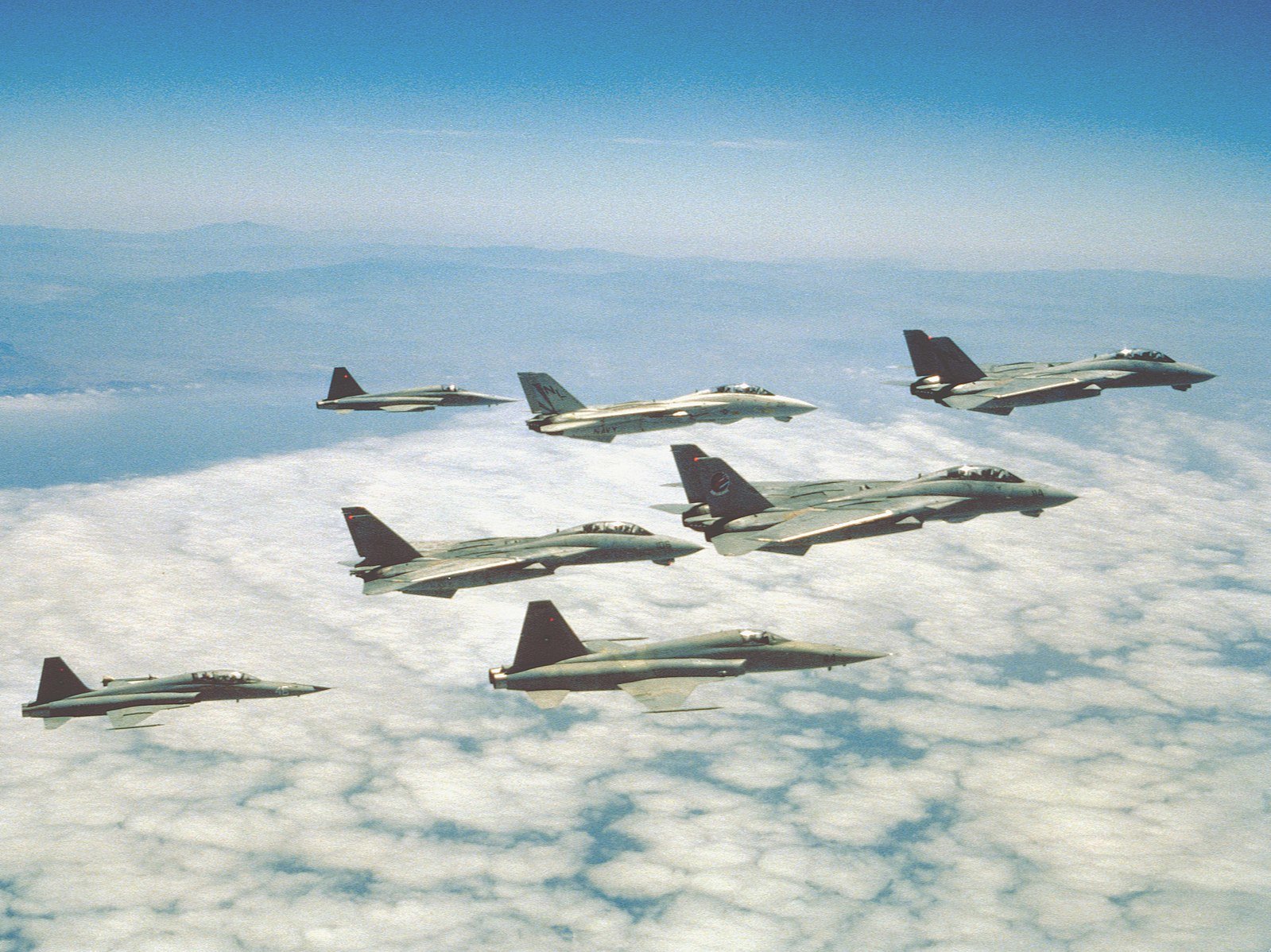
“We actually worked seven days a week probably, starting at 4:30 in the morning,” Pedersen said. “On Fridays, I let the youngest guys who lived in La Jolla out early, so they could party — that’s what young guys are supposed to do — but most of us never got home during the week. I spent many nights sleeping in my car.”
In the early days of TOPGUN, after-action reviews and debriefs were challenging to record during training exercises.
“Prior to each engagement, pilots made brief notes about their airspeed, altitude, and heading on ‘kneeboards,’” according to an exhibit at the USS Midway Museum. “Additional notes might be made as they returned to base, but to a large extent, the pilots relied on their own perspectives and memories for the review.”
The archaic methods for recording performances resulted in highly subjective interpretations of the exercise results. It spawned a common phrase heard at the schoolhouse: “The first pilot to the chalkboard wins the fight.”
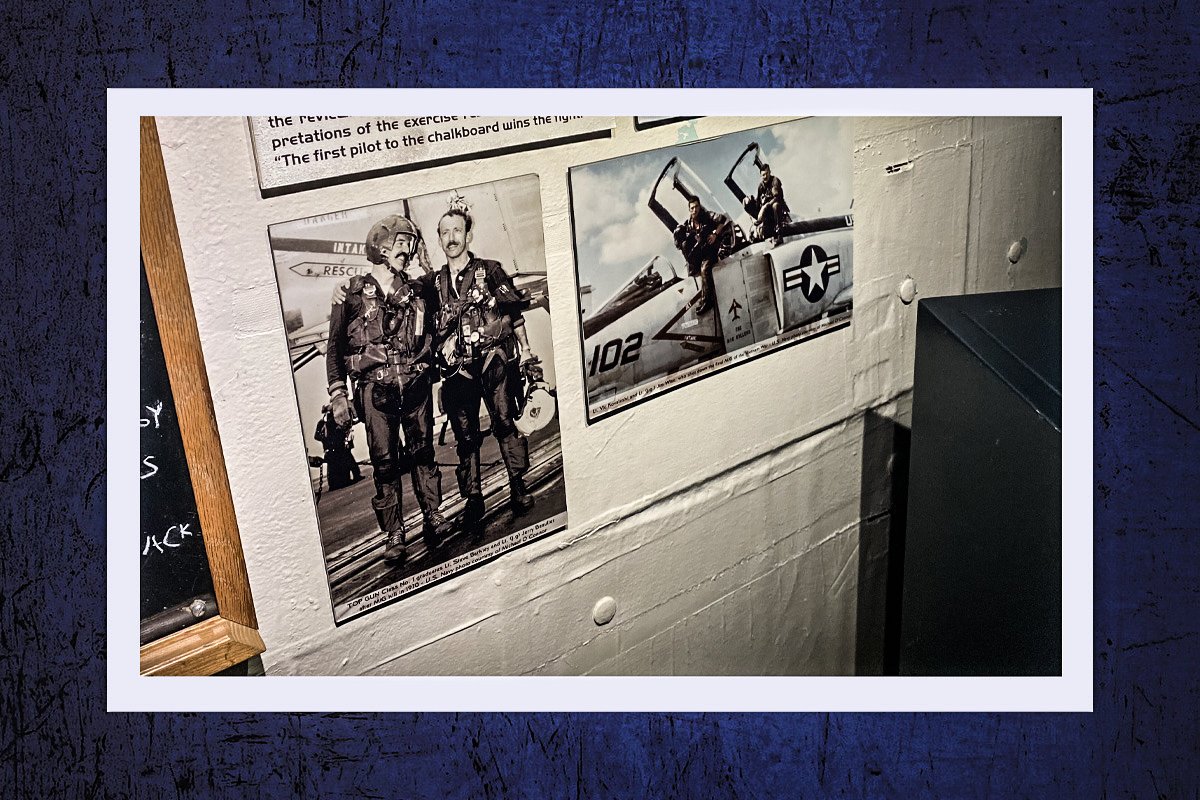
The TOPGUN school also teaches advisory instructors and air-to-air-intercept controllers.
“Their job is to make sure that, top to bottom — CO all the way down to the brand new aircrew — are trained in the latest tactics developed by TOPGUN,” Peverill told the DOD. “The payback that the fleet gets from a TOPGUN graduate isn’t just an individual investment, it’s a community investment – a Navy investment.”
Perhaps the most outrageous anecdote about the relationship between the school and the movie was revealed by former TOPGUN instructor Cmdr. Guy “Bus” Snodgrass in his book TOPGUN’s Top 10: Leadership Lessons From the Cockpit. Apparently, if any of the students are overheard quoting the movie, they are fined $5.
To which we’d say, “Negative, Ghost Rider,” because that’s a price worth paying.
Read Next: Air Force Hijacks ‘Top Gun: Maverick’ To Recruit Future Fighter Pilots

Matt Fratus is a history staff writer for Coffee or Die. He prides himself on uncovering the most fascinating tales of history by sharing them through any means of engaging storytelling. He writes for his micro-blog @LateNightHistory on Instagram, where he shares the story behind the image. He is also the host of the Late Night History podcast. When not writing about history, Matt enjoys volunteering for One More Wave and rooting for Boston sports teams.
BRCC and Bad Moon Print Press team up for an exclusive, limited-edition T-shirt design!
BRCC partners with Team Room Design for an exclusive T-shirt release!
Thirty Seconds Out has partnered with BRCC for an exclusive shirt design invoking the God of Winter.
Lucas O'Hara of Grizzly Forge has teamed up with BRCC for a badass, exclusive Shirt Club T-shirt design featuring his most popular knife and tiomahawk.
Coffee or Die sits down with one of the graphic designers behind Black Rifle Coffee's signature look and vibe.
Biden will award the Medal of Honor to a Vietnam War Army helicopter pilot who risked his life to save a reconnaissance team from almost certain death.
Ever wonder how much Jack Mandaville would f*ck sh*t up if he went back in time? The American Revolution didn't even see him coming.
A nearly 200-year-old West Point time capsule that at first appeared to yield little more than dust contains hidden treasure, the US Military Academy said.












